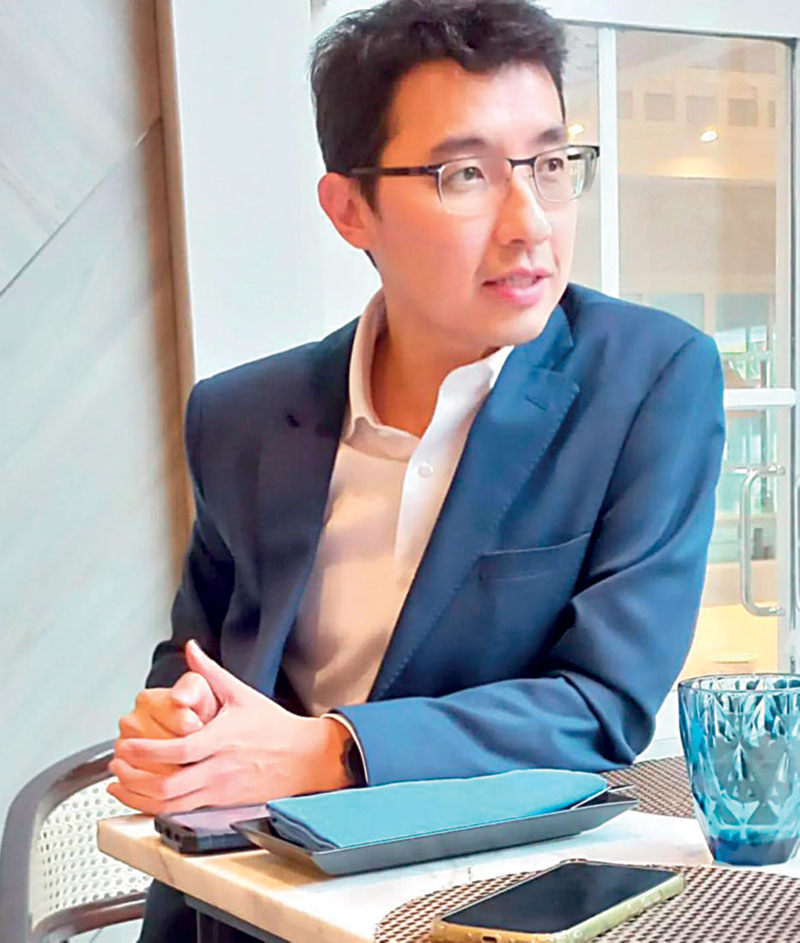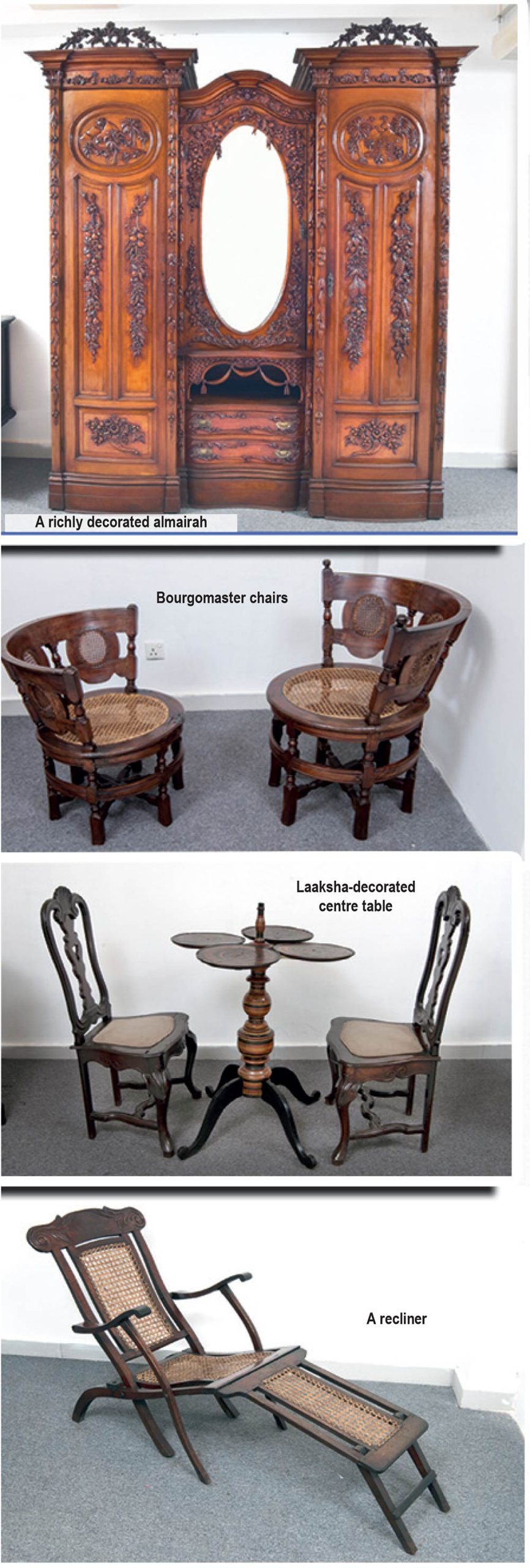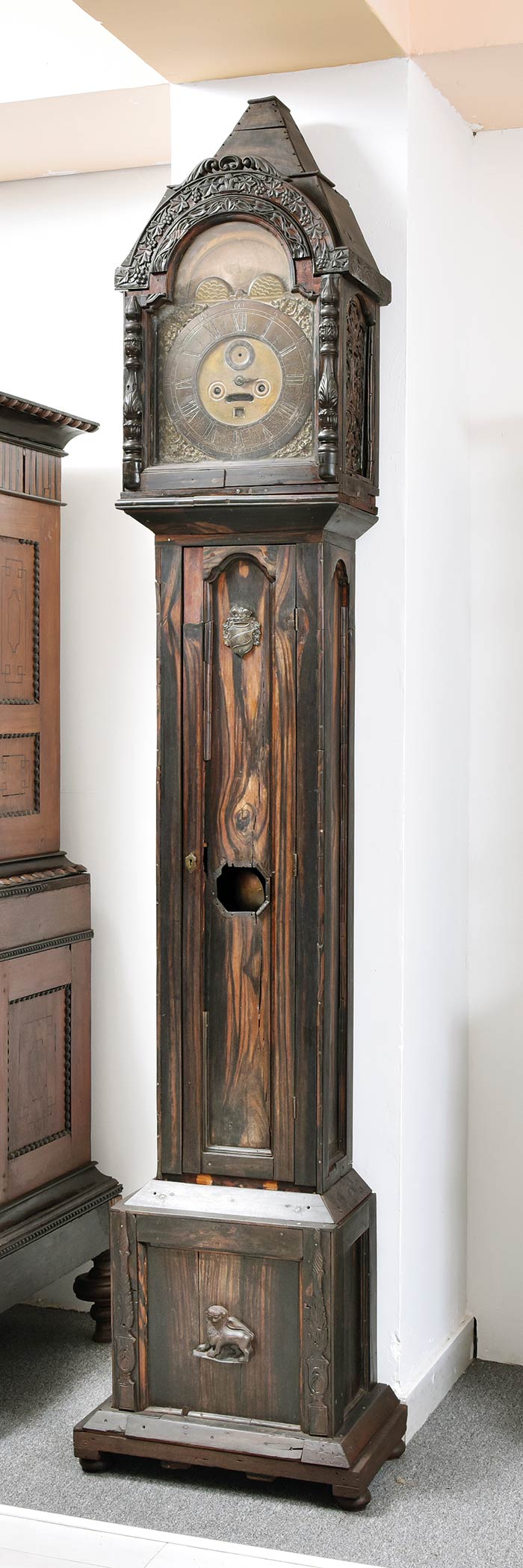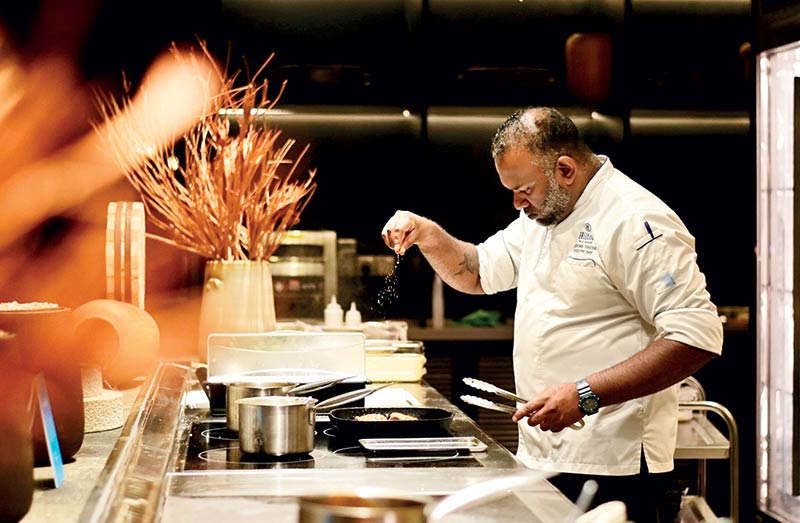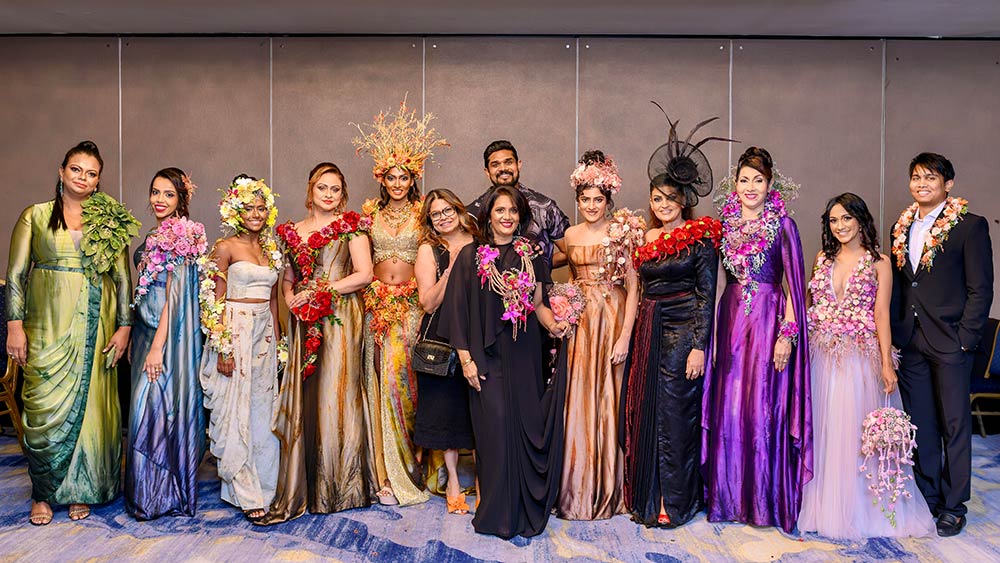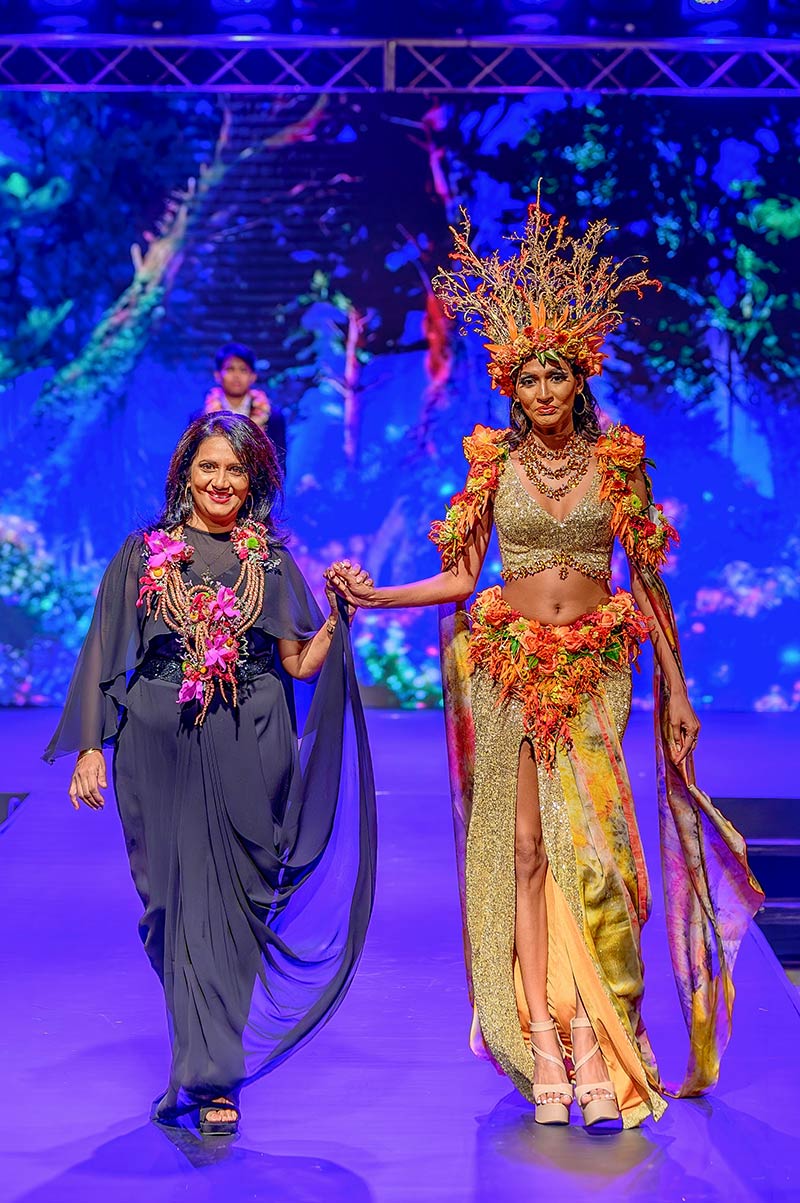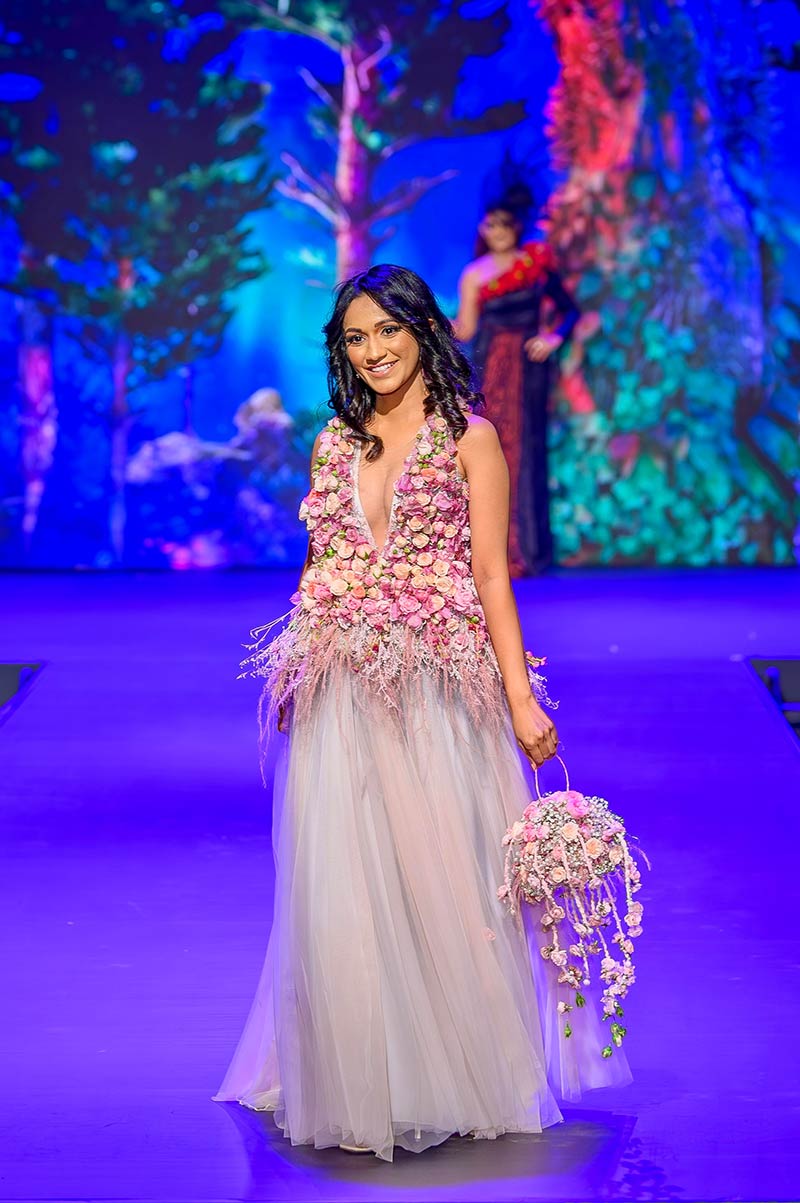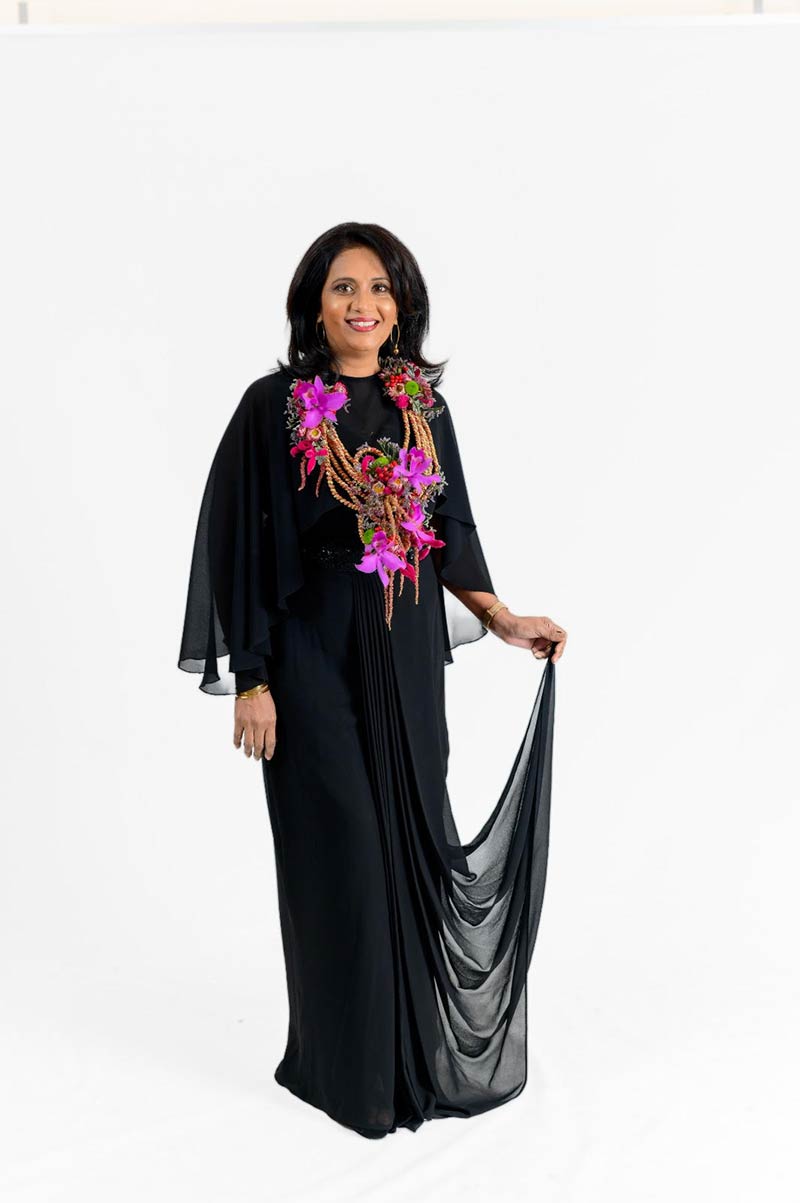Life style
Advanced treatment and management strategies for heart failure

 There has been a perceptible rise in cardio vascular disease in South East Asia, said Dr. Lim Choon Pin, a distinguished cardiologist practising at Mount Elizabeth hospital Singapore who visited Sri Lanka recently to participate in the Annual Sessions of the College of Physicians at Shangri-la Hotel Colombo. He specialises in advanced heart failure, heart transplantation and mechinical circulatory device.
There has been a perceptible rise in cardio vascular disease in South East Asia, said Dr. Lim Choon Pin, a distinguished cardiologist practising at Mount Elizabeth hospital Singapore who visited Sri Lanka recently to participate in the Annual Sessions of the College of Physicians at Shangri-la Hotel Colombo. He specialises in advanced heart failure, heart transplantation and mechinical circulatory device.
Dr. Lim was invited as a keynote speaker at the Cardiology Symposium, where he addressed the pressing issue of heart failure Dr. Lim shared his expertise on advanced treatment and management strategies for heart failure, shedding light on the latest research practices.
His visit marked a significant contribution to the exchange of knowledge between Sri Lankan and international medical professionals in the field of Cardiology.
Heart failure is a prevalent cardio vascular condition affecting millions globally. It develops when the heart cannot pump blood efficiently, leading to a spectrum of health complications. The obvious culprits are unhealthy eating habits and lifestyle.
What role does stress play here?
Dr Lim said “We are what we eat”, and our poor diet has led to a rise in conditions like high blood pressure, high cholesterol and diabetes. These are the biggest risk factors for cardiovascular diseases and are often the consequence of an unhealthy lifestyle and diet. Another risk factor is smoking. A smoker has twice the chances of getting a heart attack when compared with a non-smoker. People are also leading a more sedentary lifestyle, which also increases the risk of them developing heart diseases.
Stress plays a major role here since stress can lead to higher blood pressure, higher heart rate. Dr Lim believes that stress does contribute to cardiovascular diseases, although it may be hard to prove this. This is simply because it is difficult to quantify stress and thus determine its impact on our body.
What patients are the most susceptible to heart disease? Does genetics play a major role in determining the health of our heart?
The patients with the risk factors of diabetes, high blood/pressure, high cholesterol as well as the ones who smoke, are the most susceptible to heart disease. determining your cardiovascular health.Genetics, unfortunately also plays a role in determining your cardiovascular health Having a first-degree relative suffering coronary heart disease at a young age predisposes you to also developing it.
Dr Lim Choon maintains prevention is always better than cure. Heart disease, while not 100% preventable, is certainly treatable. We need to start early by being mindful of our lifestyle choices and exercising regularly from a young age. Engaging in moderate forms of exercise for 30 minutes at least five days a week will be enough. We should also go for regular check-ups, to keep track of our blood pressure, cholesterol and sugar levels. It may surprise to know that a heart attack is the number one killer among women One in every deaths is caused by either a heart attack or a stroke says Dr Lim Choon.
A heart attack usually starts slowly with mild pain and discomfort ignoring these signs can be fatal says Dr Choon, if you recognise them when they occur and react quickly. A healthy diet can help you fight against cardio-vascular diseases controlling risk factors such as high cholesterol,diabetes and obesity. . Age,family history, lifestyle habits and physical inactivity can also have a negative impact. According to Dr Lim heart attacks occur when the arteries supplying blood to the heart become hardened and narrow blocking the flow. There are warning signs but it can come on suddenly. There are now minimally invasive treatments for heart problems such as stenting, bypass surgery and heart transplant. A coronary angiogram carried out in hospital will detect any blockages in the arteries said the doctor. One of doctor Lim’s sub speciality is heart transplant . Heart transplant is a high risk surgery and reserved for very sick patients with advanced heart failure he said.
Speaking about Covid-19 and heart disease Dr Lim said patients with pre existing heart diseases are at higher risk of developing a serious heart problem,as thier heart muscle function may already be weak or damaged . Any pre existing blood vessel blockage could also lead to a sudden heart attack triggered by the infection and inflammation.
Talking about heart transplant patients, he said after a heart transplant,a patient can live longer and enjoy a better quality of life. But he pointed that life expectancy for patients after a heart transplant is also variable depending on age and other medical issues, In carefully selected patient, a heart transplant is usually the best treatment for heart failure who are fit enough for the operation said Dr Lim He said heart transplant is a surgery to remove a diseased heart from a patient and replace it with a healthy one from an organ donor. Heart transplant can lengthen and improve overall quality of life
He said heart transplant process can be gruelling on some patients. Heart transplant is also a high-risk surgery and is reserved for very sick patients with advanced heart failure. However, a heart transplant can offer a significantly better quality of life, I would encourage all potential heart transplant patients to look to the past thousands of patients who have successfully gone through the surgery for motivation and inspiration.
The rate of heart transplants in the world has reached a plateau in the past 20 years. This is simply due to the limited supply of healthy donor organs. Due to an aging population, greater number of people getting cardiovascular diseases are very common but dr Lim maintains better survival rates are possible now due to medical and technological advancements.
One of the most established treatment methods for end-stage heart failure these days is the Ventricular Assist Devices (VAD), otherwise commonly known as an artificial heart pump. Ventrcular assist devices VADs can offer a lifeline to people whose hearts are too weak to meet their needs. Dr Lim said these VAD devices are mechanical pumps that takes over the heart pumping station to the rest of the body. Its a treatment for a weakened heart or heart failure. A VAD may be used to help the heart work while waiting for other treatments, such as a heart transplant . After a surgical implant procedure Sometimes a VAD is used to permanently help the heart pump blood. When placed in the left ventricle, its called a left ventricle assist device LVAD, This device provides a constant flow of blood from the heart to to the body.
Dr Lim said these pumps are reccomended for people whose hearts are too weak to meet thier demands. A VAD can bring notable positive change to your life including an increase in survival and an improved quality of life.The VAD is implanted into the heart and its key function is to pump blood out of the heart to the rest of the body. With a VAD patients have an 80% chance of surviving, and after this surgical implant procedure, most people experience notable symptom imorovements and better quality of that lasts for years.
A good quality of life is possible after the successful operation of implanting this pump explains Dr. Lim.
Ventricular assist devices or artificial heart pumps have been invented to support a badly damaged heart and help cardiac function. Of course, heart transplantation can also be an option, but with long waiting periods, and limited donor pools, not to mention these electronic rescuers help about 80 percent of patients to survive the long wait for a donor heart.
“Ventricular assist devices, in particular, are what’s exciting in the field of heart failure. It is basically a heart in a box,” comments Dr Lim. The device simply pumps blood from the lower chambers of the heart to the rest of the body and is especially useful to patients with an advanced case of heart failure, ultimately saving their lives. These devices have become smaller and more durable in the past decade and the risks of the surgery have also reduced significantly in recent years.
The age-old advice of prevention being better than treatment is a stand alone truth that can never be refuted, and it all starts with a simple acknowledgment, “I need to take a look at my heart.”
Life style
A synthesis of native craft and European design
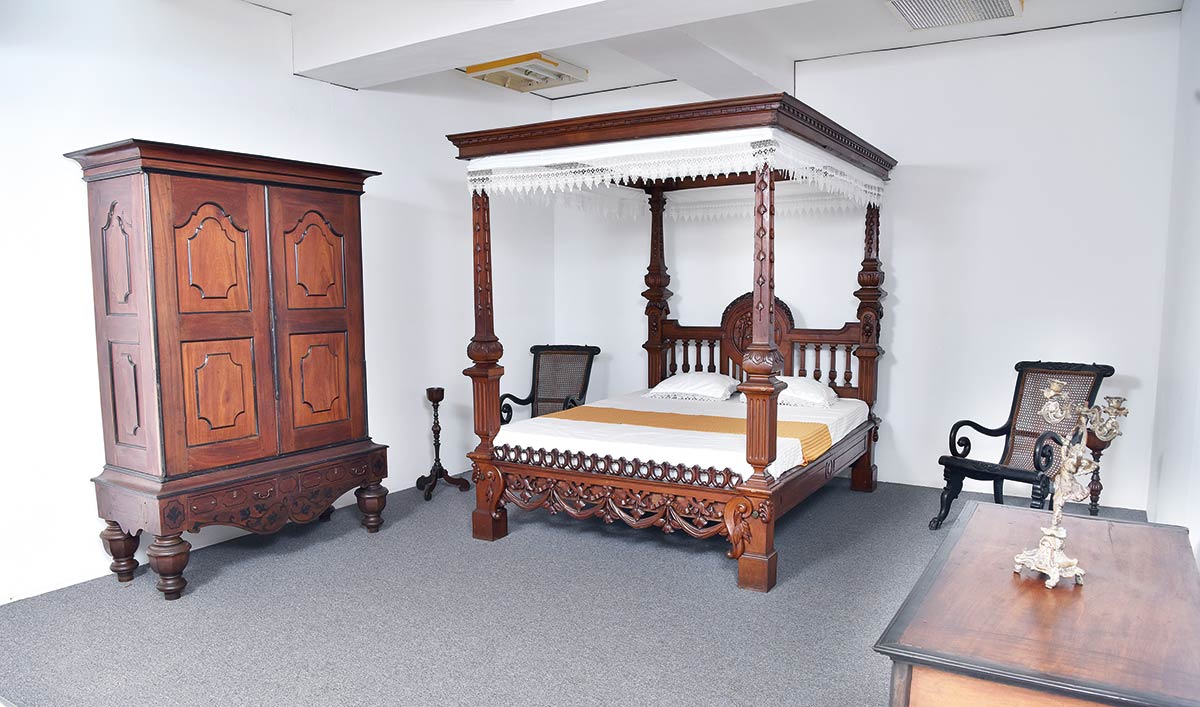
Colombo National Museum’s new Furniture Gallery which displays a fine collection from the Kandyan kingdom and the colonial times, is soon to be opened to the public. We had a sneak-peak at the new gallery’s intricately designed ebony almirahs, four-posters, palanquins from the Kandyan times, cradles and Burgomaster chairs from the Dutch times and much more…
BY RANDIMA ATTYGALLE
The first impression of the Colombo National Museum’s new Furniture Gallery is that it’s a synthesis of the indigenous craft and that of the European genus. The 17th century Dutch grandfather clock which stands tall at the entrance to the gallery is juxtaposed with the traditional Kandyan laaksha-embelished centre tables. The richly ornamented Kandyan palanquins and finely crafted chairs inspired by the Dutch tradition, equally speak for the skills of the Lankan artisan who could navigate different schools of art with ease.
A luxury of the nobility
Until the mid-20th century, the use of furniture in Lankan homes was minimal. Except for small three-legged benches, there were hardly any pieces of furniture found in ordinary households. Even guest seating was arranged by laying a mat on the outside verandah. The use of furniture was accepted as a luxury by the royalty, nobility and the priests. Ananda Coomaraswamy in his work Mediaeval Sinhalese Art notes that, ‘none but the king was allowed to sit upon a chair with a back.’ The chairs that we are familiar with today did not exist here at home in the early 16th century. Coomaraswamy further writes of a beautiful chair dedicated by Kirti Sri Raja Sinha preserved in the Asgiriya pohoya-ge which is painted and inlaid with ivory. Paintings at Degaldoruwa also depict a number of types of stools and chairs. ‘Ordinary tables, were not in general use, though mentioned by Knox (Robert Knox) among the King’s private treasures, most of which he had obtained from wrecks or were gifts brought by ambassadors,’ says Coomaraswamy.
Colonial influence
Most of the furniture we are familiar with today such as chairs, tables, bedsteads and wardrobes were first introduced to the island by the Portuguese in the 16th century. The native words putuwa and almariya (derived from the Portuguese word armario) are of Portuguese origin. Later, the Dutch colonization of the coastal areas of the island gave birth to a rich furniture-making legacy.
In the article, ‘Colonial Dutch Furniture’ by E. Reimers published in the Journal of the Ceylon Branch of the Royal Asiatic Society (RAS) of 1937 (Vol XXXIV), the writer states that the ‘Dutch with their characteristic caution and attention to details should have provided for their domestic needs in their Eastern colonies’ and have probably brought some of their master carpenters to the island. Local carpenters probably became their understudies.
R . L Brohier in his book, Furniture of the Dutch Period in Ceylon documents: ‘Large number of Porto-Sinhalese and others from the Sinhala community whose ancient trade was carpentering found employment in the Dutch winkels or workshops in Ceylon. It was from the Dutch that the ‘Moratuwa Carpenter’ and the Low country Sinhalese generally learnt the art of furniture-making and even up to the British period of occupation in Ceylon duplicated the genuine Dutch models and preserved many of the Dutch patterns.’
Superior Ceylonese furniture
Brohier further notes that, ‘the period which the Dutch were in Ceylon synchronized with this golden age of furniture development in Europe-claimed by authorities to have been a period of artistic activity never equaled before or since in the history of furniture.’ The assortment of chairs, settees, book cases and wardrobes found in the Colombo Museum’s new gallery is a testimony to this legacy the Dutch.
The Burgomaster chair type which was first made in the Netherlands in about 1650 and the subsequent Queen Anne Style type and those of the rococo style (which are found in the Wolvendaal Church in Colombo) are among the interesting chairs found in the gallery. Jan Veenendaal in his book, Furniture from Indonesia, Sri Lanka and India during the Dutch Period, observes the distinction between the chairs from Sri Lanka and Indonesia in the 1740s. ‘The difference between chairs from Sri Lanka and Indonesia is very marked during this period. In Sri Lanka, the Dutch style was followed more assiduously, Chinese and of course Indonesian influences on methods of ornamentation are completely absent.’ Dr. Joseph Pearson in his writing in RAS (Ceylon) Vol XXXI, 1938 makes a distinction between old Javanese and Ceylonese furniture: ‘Generally speaking, the types of old furniture in Java has characters of its own…. The furniture is frequently overloaded with rough carving and as a rule is inferior to Ceylon furniture which is dignified in style and restrained in motif.’
Clock of the last Dutch Governor
The grandfather clock in the gallery is indeed a show-stealer. Brohier in his work provides an extensive account of it. Dating back to 1710, the clock it claimed to have been the property of the last Dutch Governor of Ceylon, John Gerard van Angelbeek. Subsequently, it passed into the possession of Leslie de Saram who was a connoisseur of antiques in 1936. He then gifted it to the University of Ceylon in memory of his mother. Brohier recalls having seen this iconic article on a visit to the university in 1963 when the clock was still intoning ‘tick-tock’. This valuable antique was ‘indecorously destroyed beyond repair together with other articles of furniture in the student riots of December 1965,’ records the historian.
Local timber and art
The laaksha or traditional Sri Lankan lacquer work has a deep-rooted history. Matale is the best-known region in the island for this art. The legend has it that this art was introduced to the island with the arrival of Theri Sangamitta who brought the sapling of the sacred ‘Sri Maha Bodhi’ tree, accompanied by numerous artisans who introduced their respective traditions to the island. Ananda Coomaraswamy describes the Sinhalase lac-work to be of ‘great brilliancy and gaiety of colouring.’ He also notes that most of the work is from a decorative point of view. The laaksha-adorned centre tables found in the gallery mirror this brilliance and add colour to the place.
In the selection of material for their earliest 17th century furniture, the Dutch appear to have shown a marked preference for dark or coloured woods, mainly ebony, records E. Reimers in his contribution to RAS (Ceylon) of 1937 (Vol XXXIV). ‘We may imagine that the Hollander’s imagination ran riot when he first came out to the East and saw rich varieties of woods which the virgin forests of Ceylon and Mauritius afforded.’ Among the other local timbers sought after by the Dutch were Calamander, (which was found in the wet forests of the Southern provinces and in the wilderness of Sri Pada, recklessly felled by the Dutch and the British and is almost extinct today), Nedun, Satinwood, Tamarind, Kumbuk, Jak, Halmilla, Suriya, Kohomba and Mara.
Public participation
The soon to be opened new Furniture Gallery at the Colombo National Museum is a fine representation of the cultural intersection of Sri Lanka, says the Director General of the Department of National Museums, Sanuja Kasthuriarachchi. “The fine collection of furniture we have as exhibits ranging from the Kandyan era to the British period in the island reflects not merely the colonial influence on the furniture-making in the island but also the fact that our traditional carpenters and artisans were naturally endowed with the skill, given their long-standing association with wood crafts.
“The Kandyan Kingdom in particular is associated with an architecture and crafts dominated by wood. This inherent skill would have probably driven our carpenters of the colonial times to ably grasp the European styles,” remarks Kasthuriarachchi who invites history-lovers to enjoy the exhibits and revisit a rich tradition. “We also welcome unique articles of furniture as gifts from the public to the gallery as means of enabling a richer experience to museum visitors,” she added.
(Pic credit: Department of National Museums)
Life style
Hilton unveils festive experiences across Sri Lanka
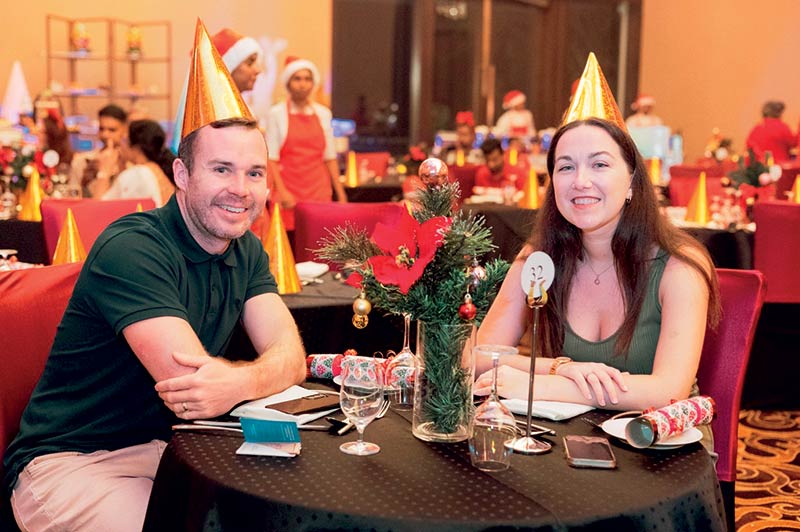
Hilton Sri Lanka is set to welcome the holiday season with a vibrant array of festive experiences across its esteemed properties. This year, the festivities are carefully crafted to evoke the warmth of home, where traditions are celebrated and new memories are created. Spanning multiple hotels—from the bustling city of Colombo to the serene landscapes of Yala and Weerawila—Hilton Sri Lanka’s holiday offerings promise unique celebrations infused with local flavor and global flair said a press release
Hilton Colombo
Hilton Colombo began the festive season in style with a Christmas tree lighting ceremony on 13 November 2024. The ceremony was attended by . Manesh Fernando, Area General Manager of Hilton Sri Lanka and General Manager for Hilton Colombo. Embracing the theme “Home for Christmas,” Hilton Colombo’s dining establishments will host a vibrant lineup of holiday events, including festive choral performances, fine dining experiences, and seasonal treats.
Adding to the holiday ambience, live performances will run from De The release also said
Hilton Colombo Residences introduces ‘Hilton Holidays,’ a series of festive experiences designed for families and business gatherings alike. From 1 – 29 December 2024, the property will offer a blend of holiday dining, festive brunches, and exclusive treats followed by live entertainment.
Adding a festive touch to the atmosphere, Choro Calibre will perform live every Friday and Saturday from 7:00 pm to 10:30 pm in the lobby, every Friday evening at Level3, and during the BBQ brunches every Sunday. Special performances are also scheduled on Christmas Eve and Christmas Day from 7:00 pm to 10:30 pm in the lobby, ensuring guests are surrounded by music and cheer throughout the holiday season.
DoubleTree by Hilton
Weerawila Rajawarna Resort
DoubleTree by Hilton Weerawila Rajawarna Resort invites families to create unforgettable memories with a schedule packed with holiday activities for all ages. Themed ‘A Festive Escape,’ the festive plan includes highlights such as a Grand Christmas Eve Gala, children’s crafting events, poolside activities, and a delightful Christmas lunch and dinner. The resort’s holiday programming is designed to bring loved ones together while enjoying the natural beauty of the surroundings.
The Grand Christmas Eve Gala at the Grand Rajawarna Ballroom promises an evening to remember tary access to the resort’s pristine pool, and an evening indulgence of a delectable slice of cake served with tea or coffee.
Hilton Yala Resort
Set against the stunning backdrop of Yala National Park, Hilton Yala Resort offers guests an immersive festive experience amidst nature. Executive Chef Jerome Tissera has curated a holiday dining experience that includes Christmas Eve dinner, Christmas Day breakfast, and special themed meals throughout the season. Guests are invited to immerse themselves in a unique blend of nature, fine dining, and Sri Lankan warmth with Holiday in the Wild, a celebration crafted to connect with the wilderness and embrace the festive spirit.
Life style
Samitha’s incredible floral journey
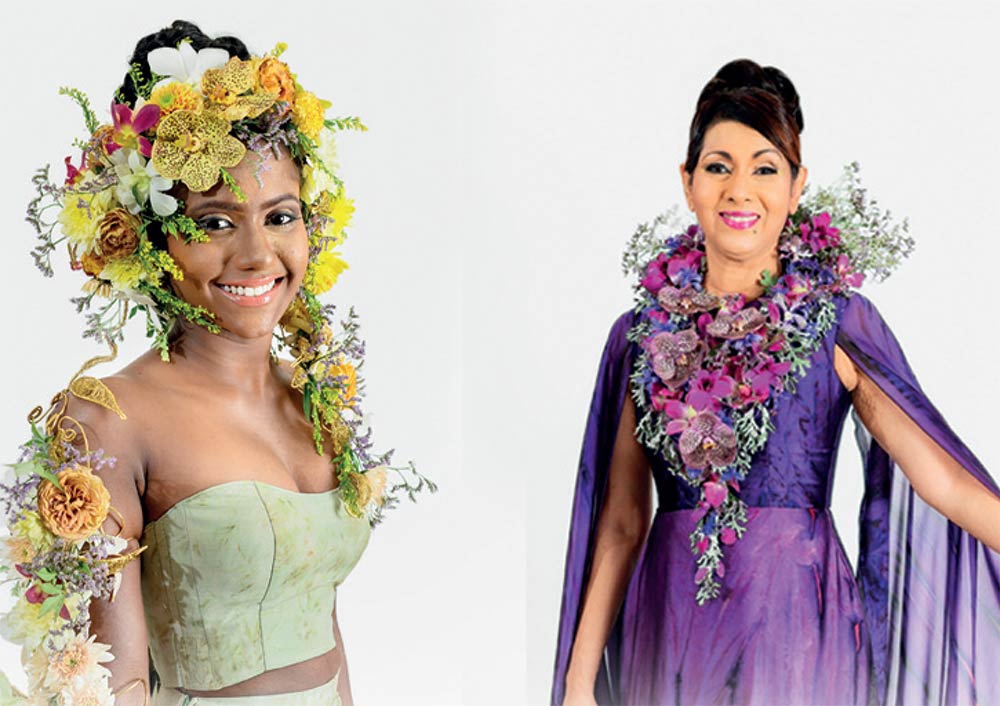
Award-winning floral designer Samitha Wijayasekara, owner of The Wedding Flowers Gallery Pvt Ltd. and a proud WCIC member, recently presented a stunning collection of floral wearable art at WCIC Ramp Up 2024. Using a unique wire technique, the fresh flower designs were paired with garments by fashion designer Charith Wijesekera. The event, produced and directed by Lou Ching Wong, took place at the Hilton Colombo. Dress designer: Charith Wijesekera. Photos: Achira Jayasinghe
Samitha Wijayasekara, founder of The Wedding Flowers Gallery (Pvt) Ltd., is recognized as one of Sri Lanka’s top floral designers. Her journey into floristry began unexpectedly after starting her career in accountancy. Fascinated by the beauty of flowers from a young age, Samitha transitioned into floristry, founding her business in 2008. Over time, The Wedding Flowers Gallery became renowned for its creative and bespoke floral designs for weddings and events.
Samitha’s commitment to excellence has earned her numerous accolades, including:
= 2015: Women’s Entrepreneur of the Year (Bronze Award)
= 2016: National Excellence Award, 2nd Runner-Up (Medium Category)
= 2016: Entrepreneur Award, Western Province Merit Award
= 2023: Sri Lanka Wedding Awards (SLWA) – Appreciation Award
Her international training, including courses with renowned floral designers such as Wendy Andrade, Gregor Lersch, and Pirjo Koppi, has further solidified her reputation. In 2015, she became the first Sri Lankan member of the World Flower Council and introduced “Wearable Floral Art’ to Sri Lanka, blending fashion with floristry in a sustainable way.
-
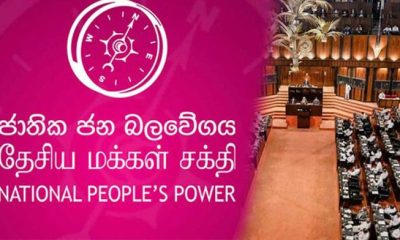
 News6 days ago
News6 days agoNPP appoints two defeated candidates as NL MPs
-
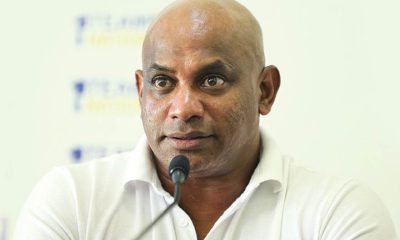
 Sports2 days ago
Sports2 days agoPathum will become world’s best batter, says Jayasuriya
-
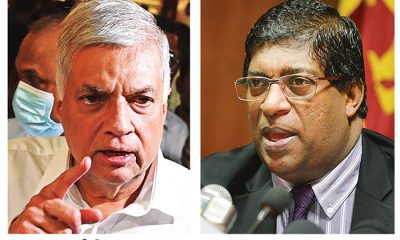
 News5 days ago
News5 days ago‘Gas Cylinder’ explodes; Ranil flays NDF Secy. for submitting Ravi’s name
-
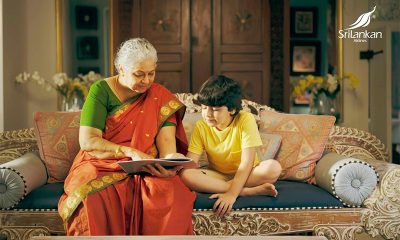
 Midweek Review4 days ago
Midweek Review4 days ago‘Ramayanizing’ Sri Lanka by Courtesy of SriLankan Airlines
-

 Sports5 days ago
Sports5 days agoMaking batting compulsory for bowlers has worked – Theekshana
-

 Sports3 days ago
Sports3 days agoSri Lanka’s cricket revival continues
-
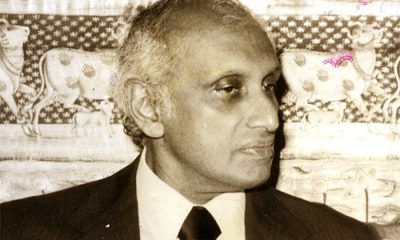
 Features4 days ago
Features4 days agoShould we go back to build another Southern Order?
-
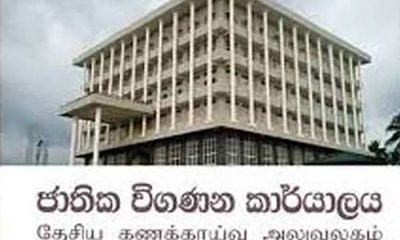
 News1 day ago
News1 day agoAbout 1,000 permits issued to SL migrant workers for electric vehicle imports misused

